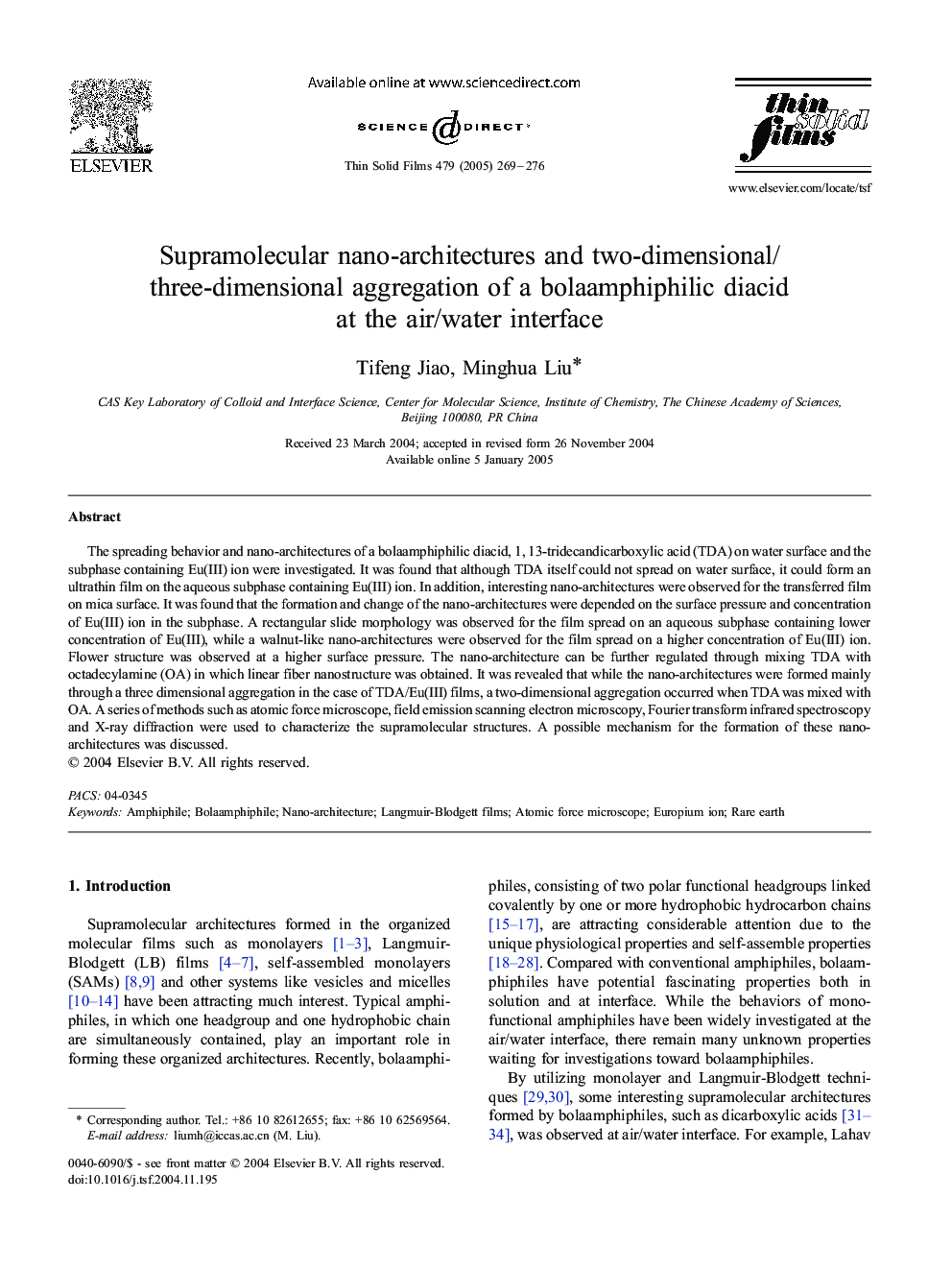| Article ID | Journal | Published Year | Pages | File Type |
|---|---|---|---|---|
| 9812757 | Thin Solid Films | 2005 | 8 Pages |
Abstract
The spreading behavior and nano-architectures of a bolaamphiphilic diacid, 1, 13-tridecandicarboxylic acid (TDA) on water surface and the subphase containing Eu(III) ion were investigated. It was found that although TDA itself could not spread on water surface, it could form an ultrathin film on the aqueous subphase containing Eu(III) ion. In addition, interesting nano-architectures were observed for the transferred film on mica surface. It was found that the formation and change of the nano-architectures were depended on the surface pressure and concentration of Eu(III) ion in the subphase. A rectangular slide morphology was observed for the film spread on an aqueous subphase containing lower concentration of Eu(III), while a walnut-like nano-architectures were observed for the film spread on a higher concentration of Eu(III) ion. Flower structure was observed at a higher surface pressure. The nano-architecture can be further regulated through mixing TDA with octadecylamine (OA) in which linear fiber nanostructure was obtained. It was revealed that while the nano-architectures were formed mainly through a three dimensional aggregation in the case of TDA/Eu(III) films, a two-dimensional aggregation occurred when TDA was mixed with OA. A series of methods such as atomic force microscope, field emission scanning electron microscopy, Fourier transform infrared spectroscopy and X-ray diffraction were used to characterize the supramolecular structures. A possible mechanism for the formation of these nano-architectures was discussed.
Keywords
Related Topics
Physical Sciences and Engineering
Materials Science
Nanotechnology
Authors
Tifeng Jiao, Minghua Liu,
